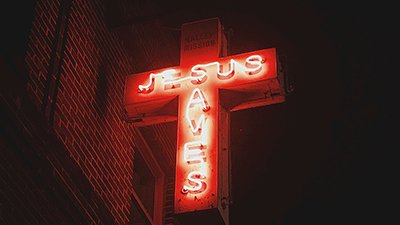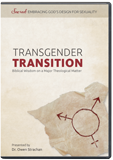
Frankenstein’s Monster As a “Transsexual Icon”?
Human attempts to transform ourselves reveal our true need for change.
In a recent article on the Atlantic magazine’s website, there was a culture piece that looked at horror movie villains as “queer icons.”
Without delving too deeply into the article—which included many forced associations as well as some movies which were specifically written from the LGBT perspective, the author, Mary Retta, looked at several different “movie monsters,” and one association really stood out. She quoted another author, Susan Stryker, who in 1994 said this in regard to Frankenstein’s monster: “The transsexual body is an unnatural body. It is the product of medical science. It is a technological construction. It is flesh torn apart and sewn together again in a shape other than that in which it was born.”
We’ve discussed numerous times the horrors of surgical mutilation and unnecessary hormone treatments that the transgender movement and an all-too-willing medical community have foisted upon young people who are undergoing a crisis in their lives or just the uncomfortable and tumultuous throes of puberty. Rather than looking to heal those who are hurting, this only adds to the pain and confusion of these young people. But the above “body” statement struck me as a reminder that everyone is remade in one way or another. Either we “remake” ourselves in our own fallen and distorted image by surgery, addiction, hedonism, false religion, doing what is right in our own eyes (Judges 21:25), or some other panacea which excludes God. Or as Scripture teaches, we are remade in the image of Christ.
Either we “remake” ourselves in our own fallen and distorted image by surgery, addiction, hedonism, false religion, doing what is right in our own eyes (Judges 21:25), or some other panacea which excludes God. Or as Scripture teaches, we are remade in the image of Christ.
A Few Biblical Parallels with Mary Shelley’s Book
While at first blush it may seem counterintuitive to compare human birth and Christian rebirth with Frankenstein and his monster, there are some striking parallels and contrasts. I’ll briefly list a few below, based on the “body” quote above.
The Bible speaks about God “knitting” or “intricately weaving” us together in the womb (Psalm 139:13, 15). The development of the child in the womb is one of the wonders of the created world, wherein genetic material from the father and mother comes together to create a new, unique individual. Scripture rightly says that people are “fearfully and wonderfully made” (Psalm 139:14). By contrast, Victor Frankenstein crudely sewed together his monster, hindered by the constraints of his abilities and tools. The resulting abomination is rejected in disgust by his creator.
There have been tremendous advances in reconstructive surgery, where surgeons reconstruct accident victims’ bodies to resemble their pre-accident selves. Prosthetics technology also gives people artificial parts to either compensate for birth defects (a sad consequence of the fall) or loss of body parts in accidents. These are good things and can be looked at as medical science attempting to alleviate some of the consequences of mankind’s sin.
Such science is also co-opted for so-called “gender affirmative care” in which biological males receive surgery and hormones to feminize their appearance and vice versa for women. However, there is no way to truly turn a male into a female or a female into a male. A man will never have the capacity to bear and nurse offspring as a mother does, and a woman will never father children. This sad imitation of manhood or womanhood robs them of their God-given femininity or masculinity that should be healthy and honoring for them as image-bearers of God. In this sin-cursed world, however, people are often confused, connived, or coerced into believing lies about their bodies, gender, or sexuality. Recently, videos have gone viral of “de-transitioners” who, having been given “cross-sex” hormones during their teen years, look neither masculine nor feminine and now realize the preciousness of what they gave up in this confusion.
Comparison and Contrast with the New Birth
It is also possible to think about Shelley’s story as a contrast to Christianity in that Victor Frankenstein provides his monster with a horrific “new life” pieced together from previously dead pieces of corpses and electrified with lightning.1 People have always sought their own solution to the curse of death, and the monster could be seen as almost an “anti-resurrected” being. Instead of the body being gloriously transformed to a state suited to eternal life in the presence of Christ, Frankenstein’s monster has a cursed existence between life and death.
Scripture speaks about the need for people to be transformed. In conversion, the believer’s heart of stone is removed and replaced with a heart of flesh (Ezekiel 11:19, 36:26; 2 Corinthians 3:3). This is alternately described as our dead heart being revived by the Spirit of God (2 Corinthians 1:22, 4:5–7; Galatians 4:6; Ephesians 1:17–19; Hebrews 10:16). The new birth also involves renewal of our minds (Romans 12:2; Ephesians 4:22–24; Hebrews 8:10).
The church is called the body of Christ and is made up of individuals from every type of people group, rich and poor, male and female, Jewish and Gentile, and all with different gifts and personalities (1 Corinthians 12:12–14). Yet despite our individuality, we are part of a single body (Romans 12:4–6; 1 Corinthians 12:27). While we have common identity in Christ, to those outside of Christ it must look like an “unnatural body.”
Conclusion
While probably not the first comparison that comes to mind when thinking of the body of Christ and its members, Mary Shelley’s Frankenstein has some curious biblical themes running throughout its pages. Whether they were entirely intentional or not is unclear (although it seems certain that many were, based on her 1831 introduction to Frankenstein). Shelly wrote the following lines to explain the moment that the monster came to life: “Frightful must it be; for supremely frightful would be the effect of any human endeavour to mock the stupendous mechanism of the Creator of the world.”2 Her book contains many other biblical allusions, usually antitheses to the creation account, as would be expected in a tale where man plays God in creating what Victor Frankenstein deems a “wretched monster.” Yet all these themes in the book showcase that Shelley had in mind an anti-creation horror concept embedded in her book that acknowledged the perfectness and goodness of the Genesis creation account and that man’s attempt to remake himself or attempt to instill life is futile and only leads to catastrophe. Only God can create and recreate humans (by new birth into Christ), as we are made in his image.
Footnotes
- Frankenstein was originally written in 1818, and it is worth noting that 200 years later, Darwinian-influenced chemical evolution still often appeals to a spark of lightning in a warm pond to impart life to non-living chemicals.
- Mary Shelley, “Introduction to Frankenstein, 1831 edition” (London: Colburn and Bentley, 1831), https://romantic-circles.org/editions/frankenstein/1831v1/intro.
Recommended Resources

Answers in Genesis is an apologetics ministry, dedicated to helping Christians defend their faith and proclaim the good news of Jesus Christ.
- Customer Service 800.778.3390
- © 2024 Answers in Genesis






